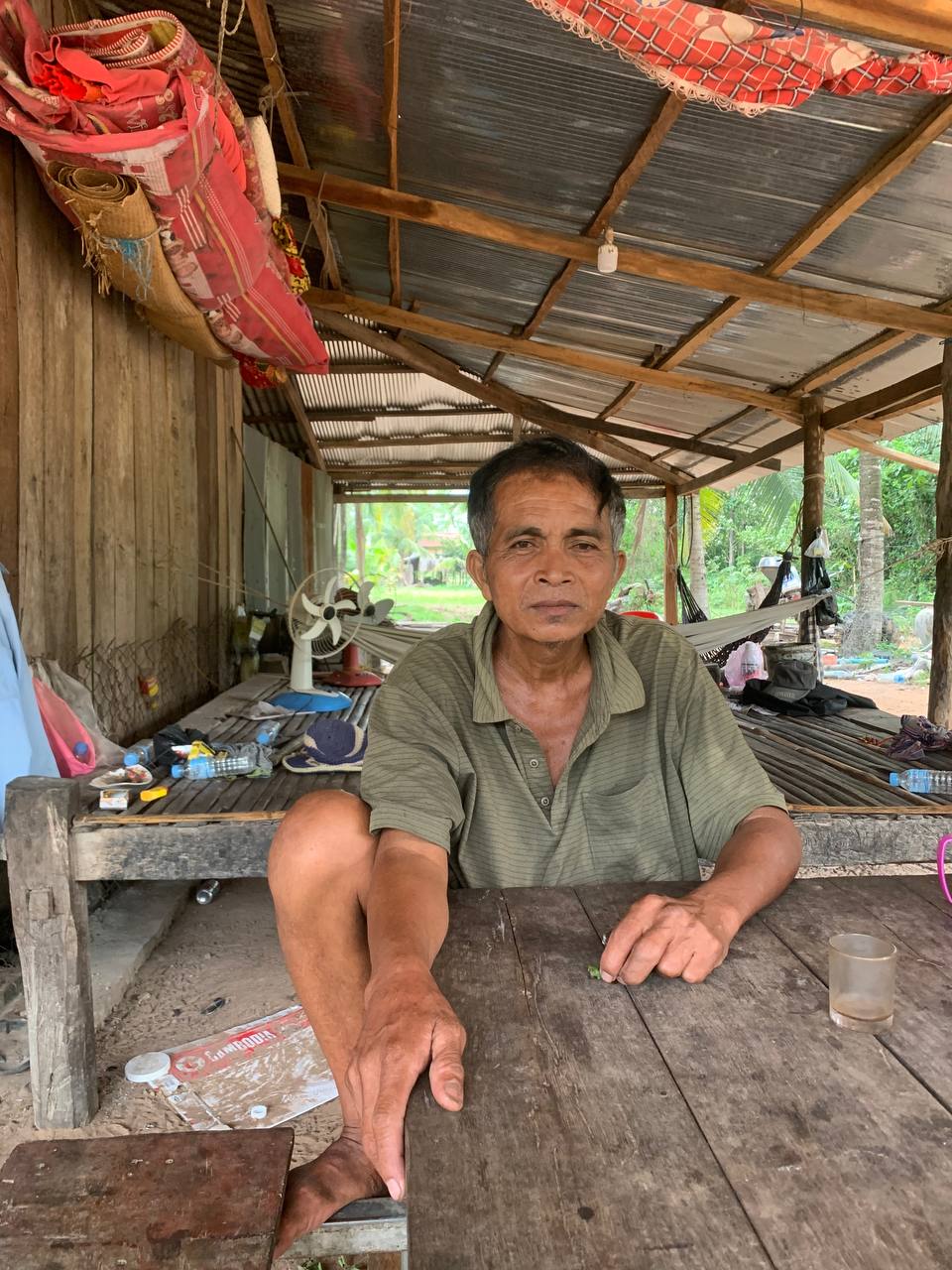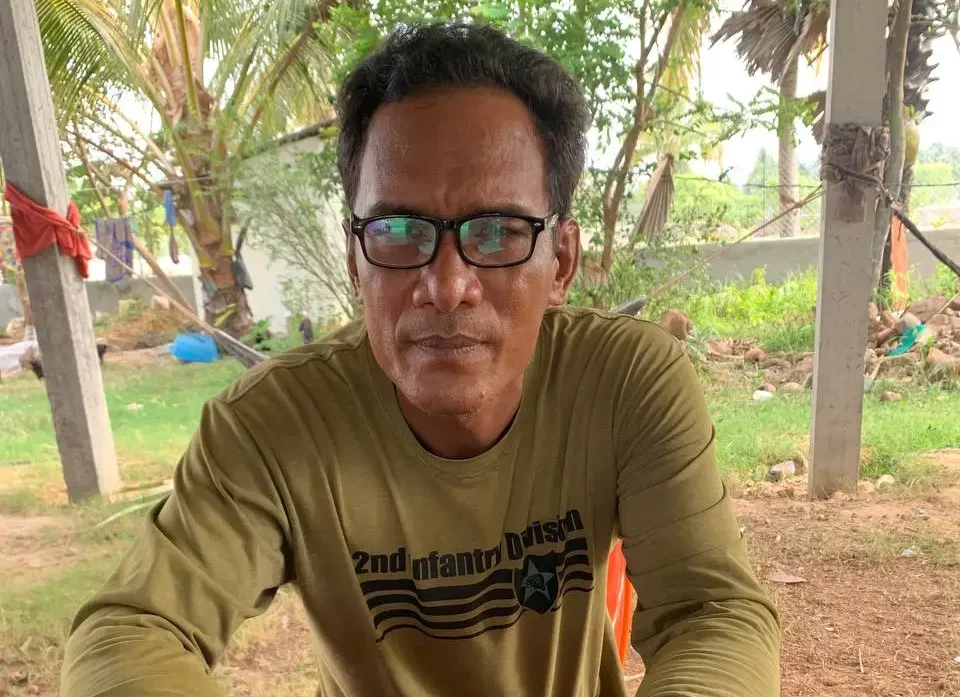My team and I from the Documentation Center of Cambodia (DC-CAM) recently traveled to Baknim village in Kampot Province, eager to hear the stories of the survivors who lived through the Khmer Rouge regime. We knew it would be an emotional journey, but it was our duty to ensure that we documented the events accurately and preserve the memories of those who had suffered. Upon arriving, we saw a middle-aged man sitting on a wooden bench outside of a house. He wore a light grey shirt, dark brown pants, and black shoes. The sun illuminated his face, and he had a slight smile on his lips. Behind him stood an old wooden house with white shutters and steel roofing. We were welcomed in and sat across the table from him. We began to record his story as he spoke. His name was Em Noa, a 62-year-old farmer living in Baknim village, Kampot province. He talked about how he had evacuated many times, and how most people got caught on the road to Battambang province. He worked relentlessly, digging land, pulling out weeds, and doing other agricultural work. He never had any formal education, but was continually forced to work day and night. Em Noa then recounted a horrifying incident. One day, he saw people being called to kill and witnessed the Khmer Rouge killing a child his age, breaking their head against a tree. The experience was terrifying, and he ran back to the village. As we left Baknim village, Em Noa’s story lingered in our minds. We realised that through preserving his voice and those like him, we were also preserving the importance of never forgetting the past and the need to ensure that such atrocities are never repeated.


